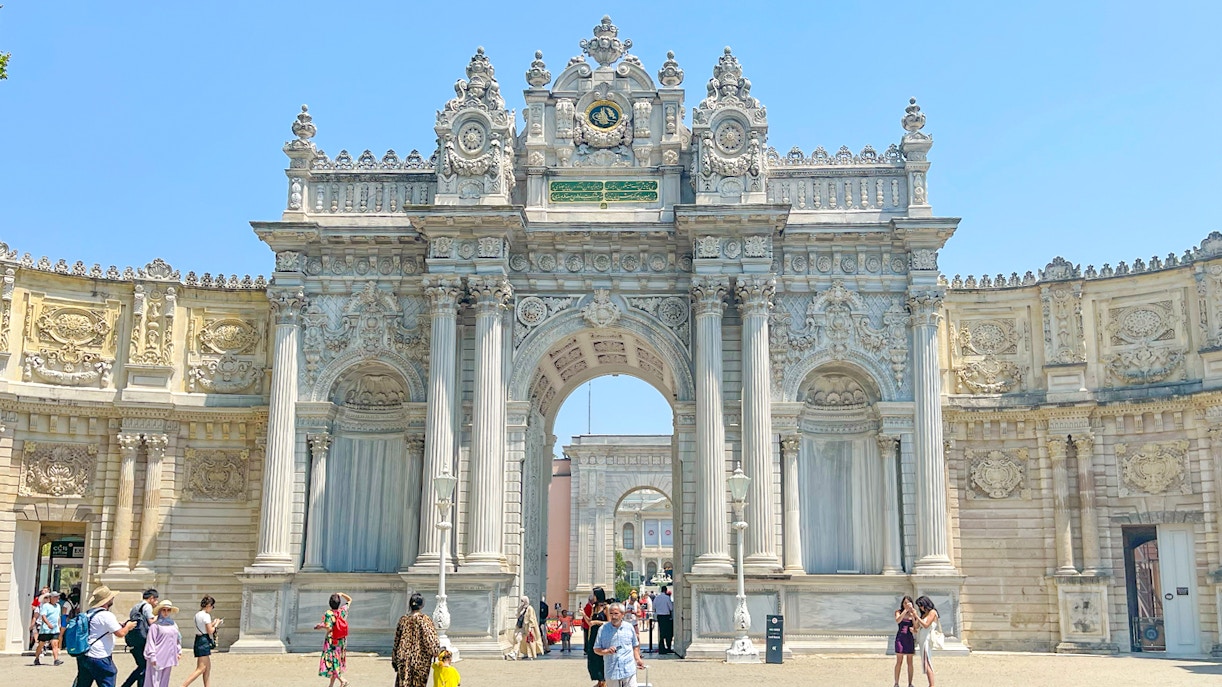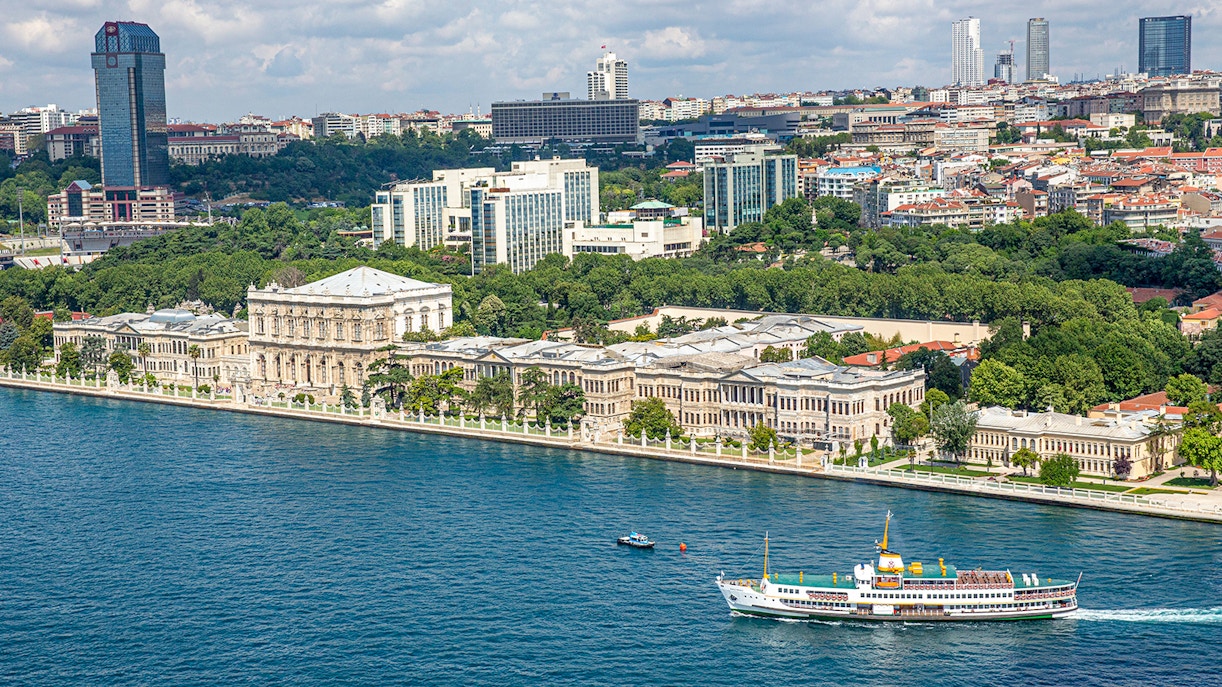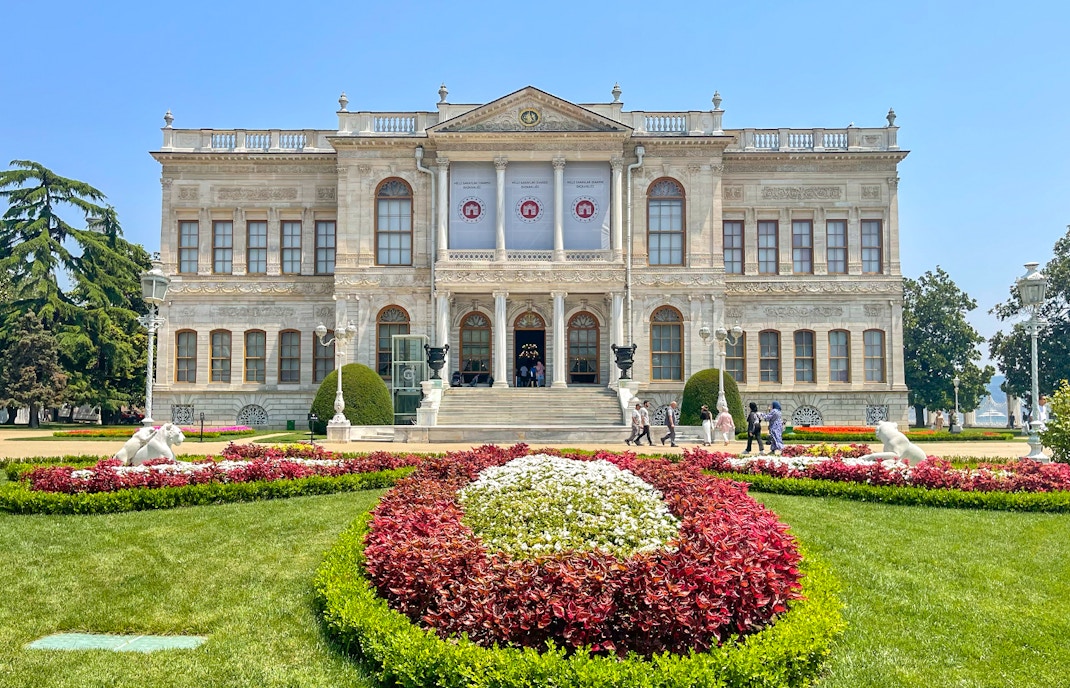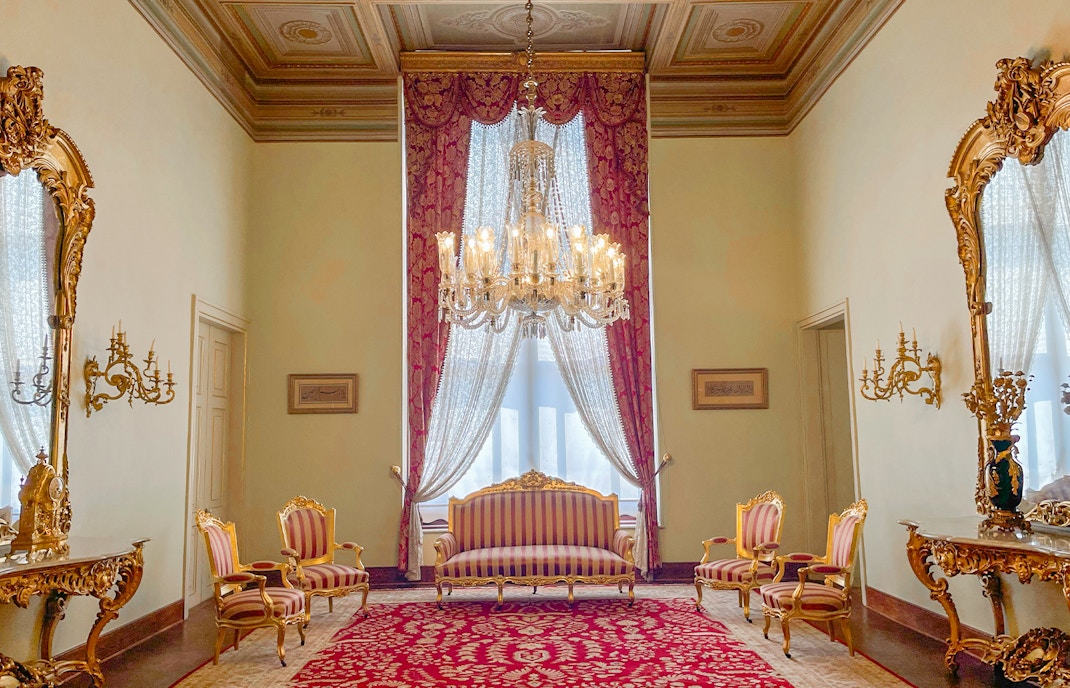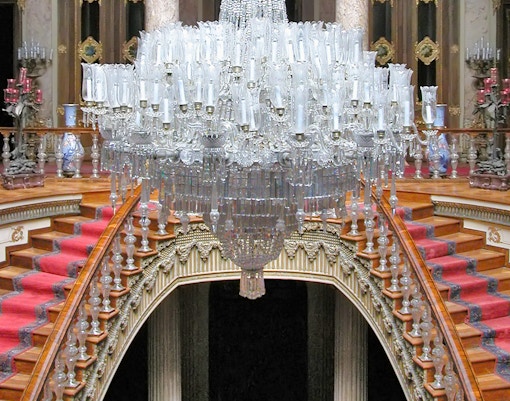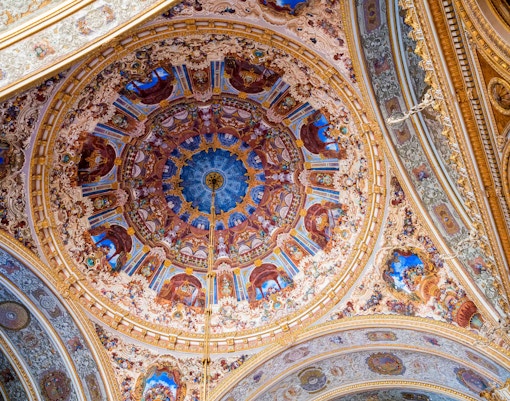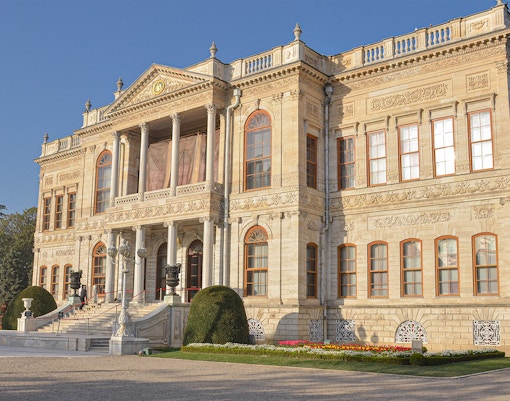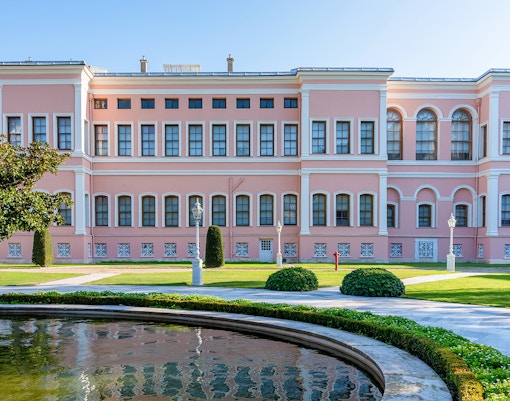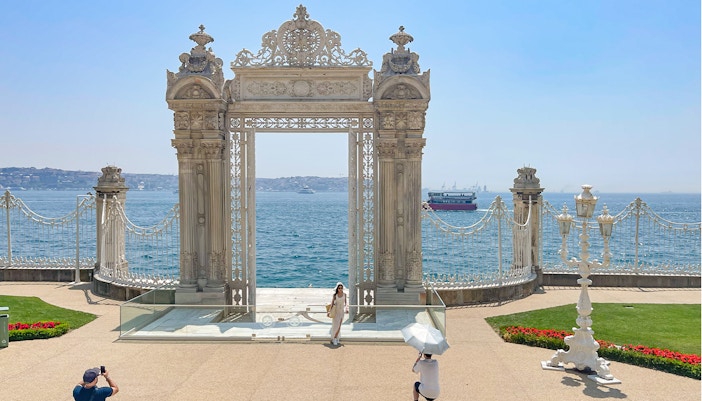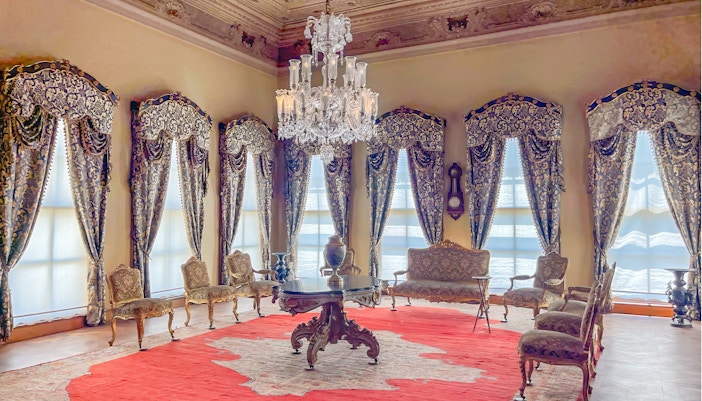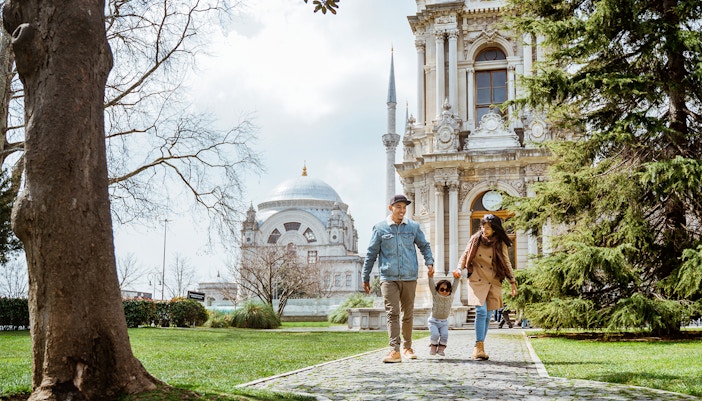The Baroque and Rococo style embellishments on the outside façade of Dolmabahce Palace highlight the European influence on the Ottoman Empire. The interiors reflect the traditional Turkish nature of the palace. The south side of the palace, known as Mabeyn-i-Humayun, consists of the male living quarters and administrative offices. The north side or the Harem-i-Humayun housed the women of the royal family. Between the two sections is a massive Ceremony Hall also known as Muaide Salon.
The palace was lavishly decorated with French baccarat glass, Bohemian crystal staircase railings, gold, carpets from Hereke made of a blend of silk, cotton, and wool, vaulted glass ceilings, Marmara marble, and the iconic crystal chandelier that was ordered from England.
Domabahche Palace is iconic as it heralded the Westernization of the Ottoman Empire. It is an elegant blend of Ottoman and Western architecture, creating a beautiful fusion that reflects its unique identity as a palace straddling the East and the West.

